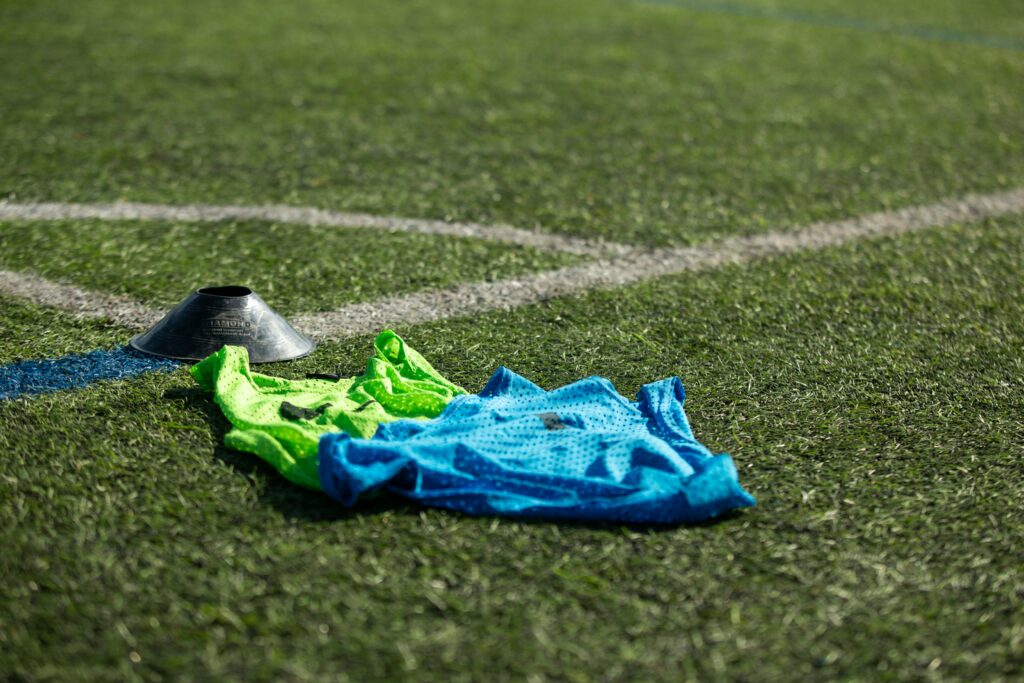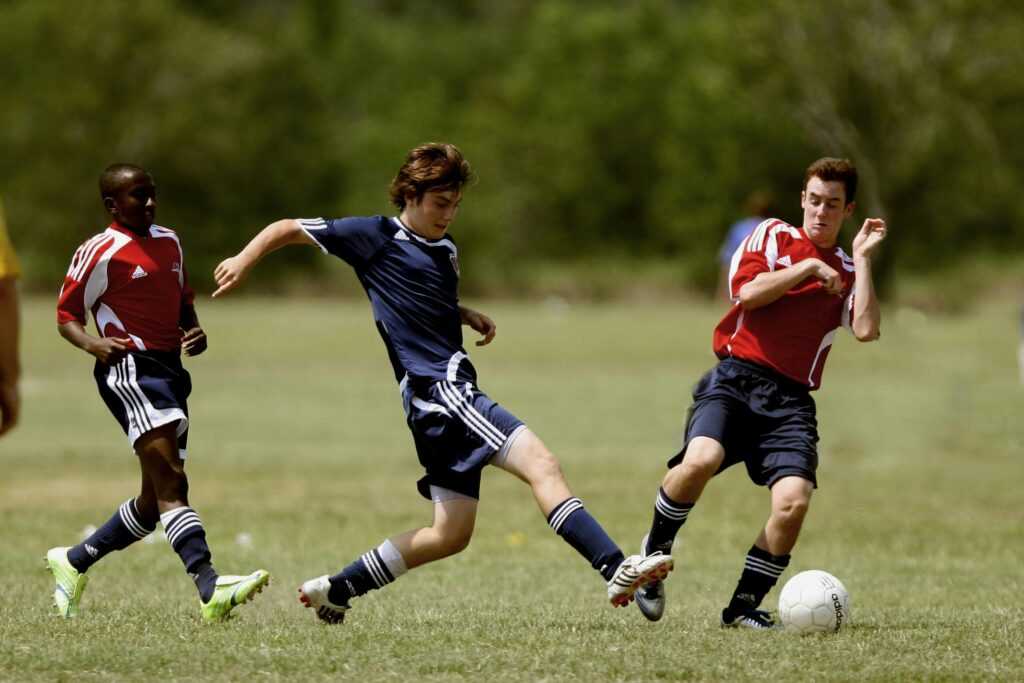Know the Warning Signs
Understanding the early symptoms of heat-related illness can mean the difference between a quick recovery and a medical emergency. On the football field, pushing limits is part of the game—but ignoring warning signs is a costly mistake.
Common Symptoms to Watch For
If any of the following signs show up, it’s time to take action immediately:
Dizziness or lightheadedness
Nausea or vomiting
Muscle cramps, especially in the legs or abdomen
Confusion or disorientation
Unusually heavy sweating or, conversely, a sudden stop in sweating
These aren’t just minor discomforts—they’re signals your body is struggling to regulate its core temperature.
Knowing When to Walk Off
There’s no glory in dragging yourself through symptoms of heat illness. In fact, trying to “tough it out” can put your health—and career—at risk.
If symptoms persist beyond a brief cooldown, you need to stop training.
Cramping can be the first sign that the body’s electrolyte balance is off. Address it immediately.
Disorientation or confusion is an emergency warning. Seek help right away.
Reminder: Strength isn’t about silence—it’s about knowing when to speak up and protect your long game.
The Critical Window
Between early symptoms and full-on heat stroke is a narrow window where quick action can prevent long-term harm. This is your chance to:
Cool down in the shade or indoors
Hydrate with cold water and electrolyte-rich fluids
Use ice packs, wet towels, or misting fans to bring body temp down
Don’t waste time second-guessing—it’s better to take five minutes now than lose a season (or more) to preventable injury.
Why Heat Illness Is a Serious Threat
Heat exhaustion and heat stroke don’t care how strong, fast, or conditioned you are — once your body’s cooling system taps out, it’s game over. Heat exhaustion starts with symptoms like dizziness, muscle cramps, nausea, and fatigue. Let that go too far, and you’re looking at heat stroke — the kind of full-system failure that can lead to brain damage or death if not treated fast.
Football players are especially at risk. The gear is heavy, the drills are intense, and summer practices push bodies hard. Every year, high school and college athletes end up in emergency rooms — or worse — from heat-related illness. And this isn’t some abstract risk. According to the National Center for Catastrophic Sport Injury Research, heat stroke has been one of the top causes of death in football for more than a decade.
The kicker? It’s almost always preventable. What changes the game is early action — not waiting until someone’s wobbling off the line to take notice. That means watching for signs, building in smarter hydration strategies, and setting the tone as a team: safety first, bravado last.
Read the full breakdown: Heat Illness Prevention
Game-Day Hydration Strategies That Actually Work

Hydration isn’t about chugging a gallon of water right before practice. It’s a steady input-output game. Start fueling early—16 to 20 ounces of water or an electrolyte drink two to three hours before training sets you up right. Then, another 8 ounces about 15 minutes before go-time. During workouts, aim for about 7 to 10 ounces every 15–20 minutes, especially in high heat or humidity. Afterward, rehydrate with 20 to 24 ounces for every pound dropped in sweat weight.
But here’s the thing—it’s not just about water. Sweating drains crucial electrolytes like sodium and potassium. Skip the sugary sports drinks packed with junk and go for smart hydration mixes or real-food replacements (think: banana + nut butter, pretzels, or a solid electrolyte tab in your bottle). Your muscles and brain need more than just H2O to function at full throttle.
Also, ignore the myths. ‘If you’re thirsty, it’s too late’ isn’t entirely true—thirst is a natural response, not a doomsday alarm. But don’t rely solely on it, especially in extreme heat. And no, cramping doesn’t always mean you need more potassium—it’s often about overall fluid/electrolyte imbalance.
For a deeper dive into hydration timing, what to drink, and how to prep like a pro, check out our Hydration Guide for Football Players.
Gear and Scheduling That Beat the Heat
Beating the heat starts before the first whistle blows. First up: gear. If you’re still training in thick, outdated fabrics, you’re stacking the odds against yourself. Lightweight, breathable practice gear lets sweat escape and helps your body cool naturally. Moisture-wicking materials aren’t just a comfort thing—they’re a performance edge.
Then there’s timing. Practicing at 3 p.m. in July? That’s not tough—it’s dangerous. Smart scheduling means hitting the field early in the morning or later in the evening when the sun isn’t out to prove a point. Coaches and trainers who build around heat intensity are more likely to keep their rosters healthy all season.
And don’t sleep on the underrated tools. Cooling towels, portable misting fans, shaded areas near drills—these aren’t gimmicks. They keep body temperature out of the danger zone. A chilled towel around the neck between reps can hold off heat fatigue longer than most think.
Small tweaks—gear, schedule, cool-down tools—add up fast. And they’re usually the difference between a player walking off the field and being carried off it.
Coach and Player Responsibilities
Heat safety isn’t something you hand off to the medical staff and forget about. Every coach, every player, every assistant has skin in the game—literally. Spotting signs of heat stress, making hydration a priority, or even just noticing when a teammate isn’t acting right can prevent collapse or worse. The training staff might sound the alarm, but by the time they notice something’s wrong, it might already be too late.
Smart teams are building systems for heat awareness that fit right into practice—not grind to a halt because of them. That means shorter reps with planned water breaks, rotating players between drill intensities, and watching weather markers like WBGT (Wet Bulb Globe Temperature), not just heat index. These are protocols, not suggestions.
But here’s the real key: teammates speaking up. Nothing macho about pushing through dizziness or brain fog. If someone’s not okay, the culture has to support calling it out without fear of being seen as weak. Accountability has to run in both directions—coaches checking players, players checking each other, and everyone keeping the bigger picture in mind: no one wins if someone goes down.
Staying cool is a group effort. Always has been.
Bottom Line
Heat illness is completely preventable. That’s not hype—it’s a fact. No player should land in the ER because of poor planning or bad habits. Every coach, player, and staff member has a role to play in keeping practices safe when the heat cranks up.
Start with structure. That means hydration isn’t optional—it’s part of the routine. Build in breaks, monitor each other, and know when to pull back. Gear and rest windows matter too, but discipline beats devices every time.
Training through summer doesn’t have to mean running the team into the ground. Done right, hot-weather practice can build grit, focus, and endurance. The key is staying sharp, staying cool, and staying aware.
No shortcuts. No excuses. Stay sharp, stay hydrated, and stay in the game.

 Chris Franconso is a distinguished contributor at Awesome Football Network, where he plays a pivotal role in delivering high-quality football content. With a deep-seated passion for the sport and extensive knowledge, Chris provides readers with thorough match previews, insightful tactical analyses, and detailed player assessments. His writing is marked by its clarity and depth, offering a comprehensive understanding of the game that caters to both casual fans and dedicated professionals.
Chris’s expertise extends beyond just reporting; he brings a nuanced perspective to football journalism that enhances the reader's experience. His commitment to presenting accurate and engaging content helps Awesome Football Network maintain its reputation as a leading source for football news and analysis. Through his work, Chris contributes to the platform’s mission of enriching the football community with relevant and timely information.
Chris Franconso is a distinguished contributor at Awesome Football Network, where he plays a pivotal role in delivering high-quality football content. With a deep-seated passion for the sport and extensive knowledge, Chris provides readers with thorough match previews, insightful tactical analyses, and detailed player assessments. His writing is marked by its clarity and depth, offering a comprehensive understanding of the game that caters to both casual fans and dedicated professionals.
Chris’s expertise extends beyond just reporting; he brings a nuanced perspective to football journalism that enhances the reader's experience. His commitment to presenting accurate and engaging content helps Awesome Football Network maintain its reputation as a leading source for football news and analysis. Through his work, Chris contributes to the platform’s mission of enriching the football community with relevant and timely information.
